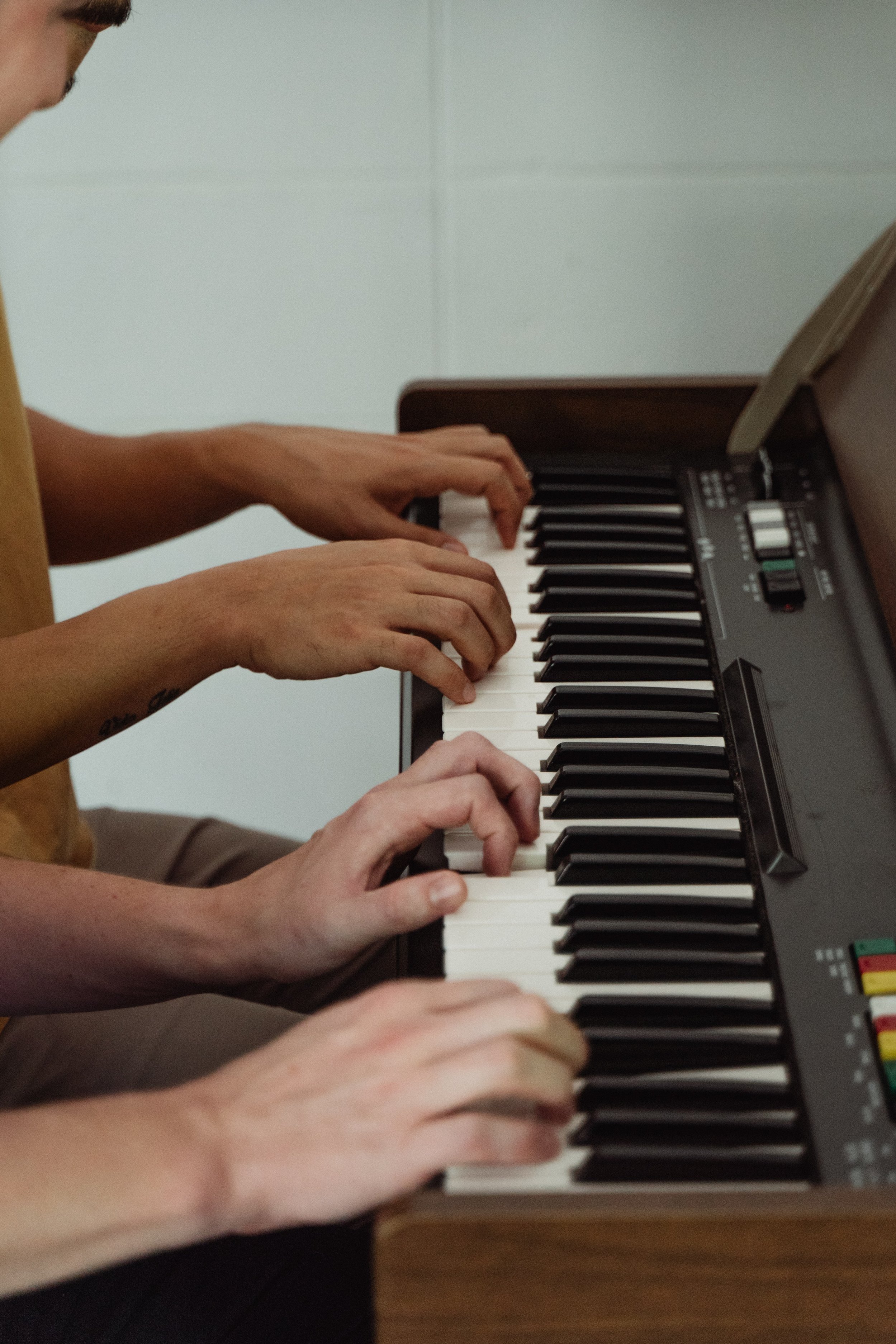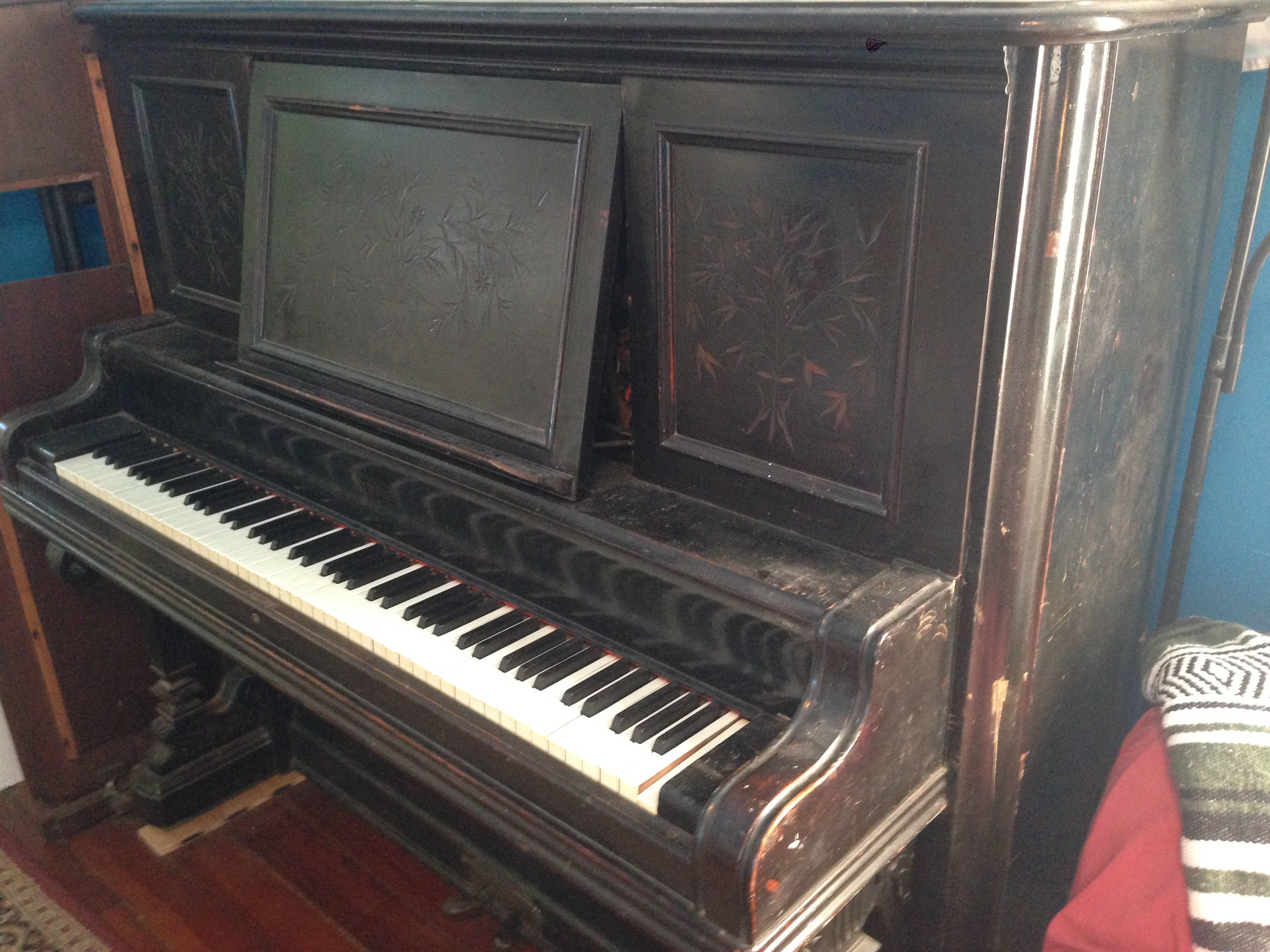So, this will just be an introductory post that will lead to several in-depth posts in the future. My roommate came across this Milton player piano for free on Craigslist, so we went to Algiers Point a week or two ago and picked it up. The bellows and player mechanism are not airtight, but are in remarkably good shape compared to the rest of the piano. In the first few pictures you can see the piano with the player mechanism (as well as most of the keys) removed. Half of the white key ivories are missing, most of the black ebony keytops are as well. The steel pins that hold the keys in place are very rusty. All of the key buttons have come unglued. My next post about this piano will likely cover replacing the keytops, re-gluing the key buttons, and replacing the key bushings of all 88 keys.
I always number the keys before removing them from the piano. This is extremely important because every key has a unique shape that is not interchangeable with any other key. They usually have numbers stamped into them by the manufacturer, but these are often difficult to decipher. Better to just renumber them in pencil or marker. Because the key buttons are unglued, I also numbered those to match the keys, in case any of them fell while I was moving things around.
When removing the keys, I keep them taped together in groups of 10-20. In this case I taped over the key buttons to keep them in place as well. Normally I would tape them between the buttons and the keytops.
Rusty balance rail pins. These will need to be sanded and polished before reinstalling the keys.
All of these pictures were taken after I spent probably 45 minutes cleaning several rats' nests out of this piano. Take extra care when working with a piano that has had rodents in it, as their feces can carry diseases that are transmissible to humans. Wear a surgical mask and gloves.
Front rail pins also need sanding and polishing. The red pieces of felt are key bushings that fell out when I removed the keys.
The piano action itself is not in too bad of shape. The hammers are worn and some have been chewed by rodents and/or come unglued.
Rodents love chewing on piano hammers.
This picture of the treble end of the action shows some previous work done. Notice the lighter replacement hammer butts as well as their green bridle straps, while the originals are red.
Player pianos rely on suction created by the pumping of two pedals to operate the pneumatics that control the piano. The previous picture shows a hole in the reservoir component of the bellows. If the whole system isn't airtight, the player mechanism will not work correctly, if at all.
The bellows removed from the piano. Notice the two foot pedals that used to power the player mechanism. They swing out away from the bellows when they need to be used.
The next couple pictures show what is known as the "top stack". This includes the tracker bar which "reads" the music rolls as well as a series of valves and pneumatics that translate suction into a push on the hammer of a specific note. Also included is the wind motor which controls the movement of the music roll across the tracker bar.
88 sets of tubes,valves, and pneumatics. One for each key.
The wind motor.























I have been servicing and tuning pianos in NOLA since 2012 after first becoming interested in piano technology in 2009. With a background in teaching bicycle mechanics, I bring a methodical mindset and a love of sharing knowledge and skills to the rich musical culture of New Orleans.